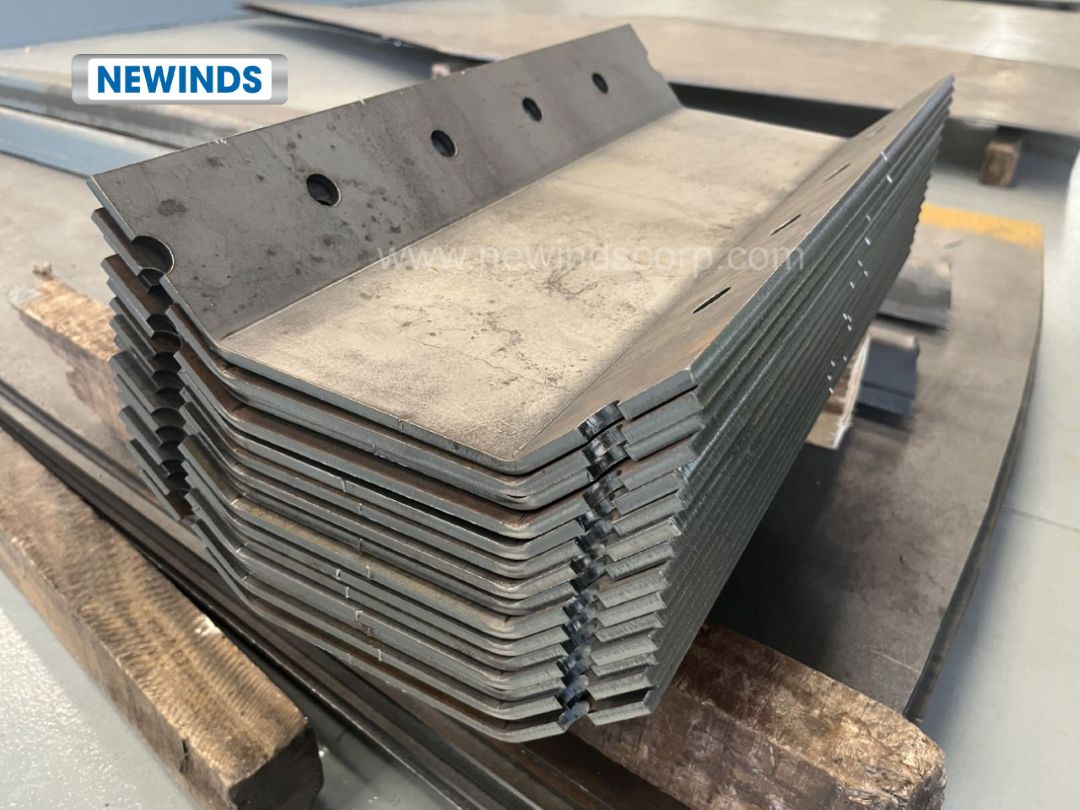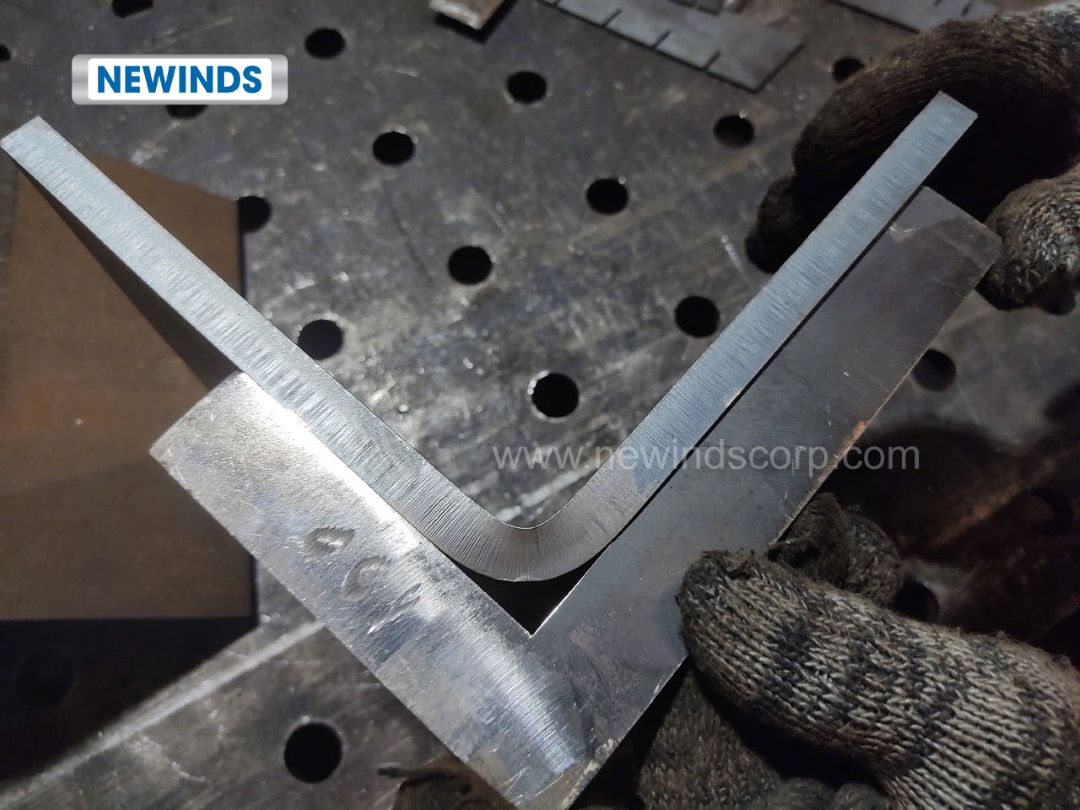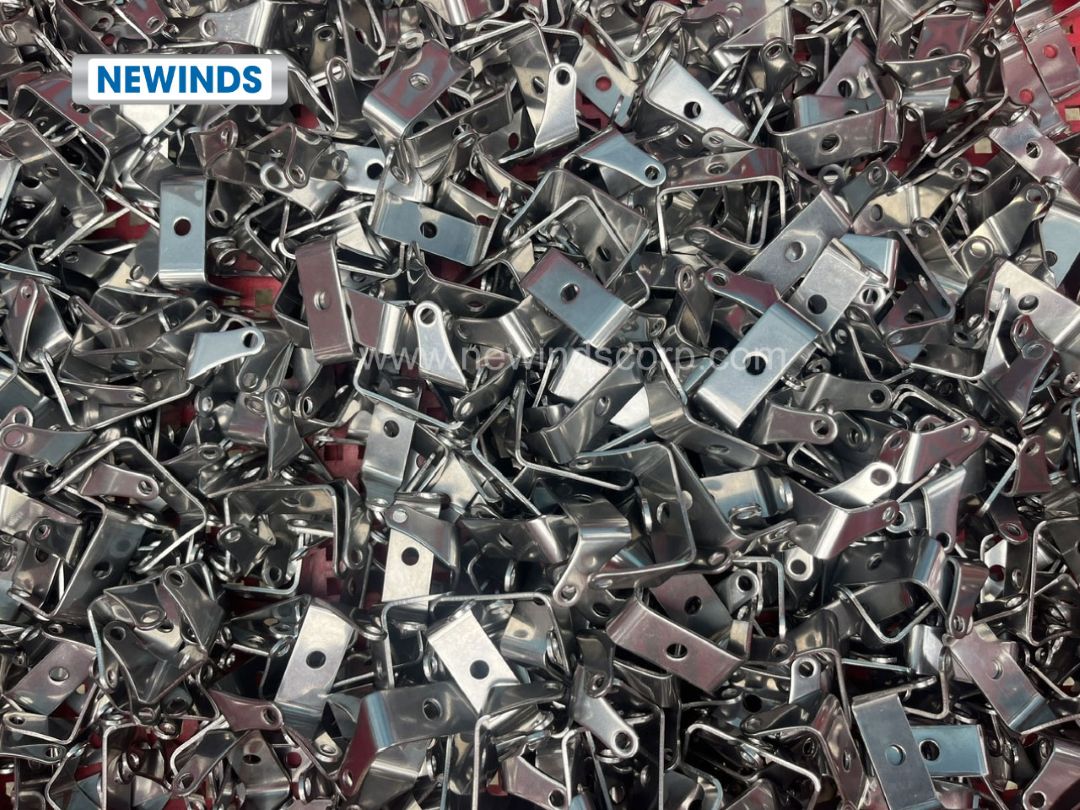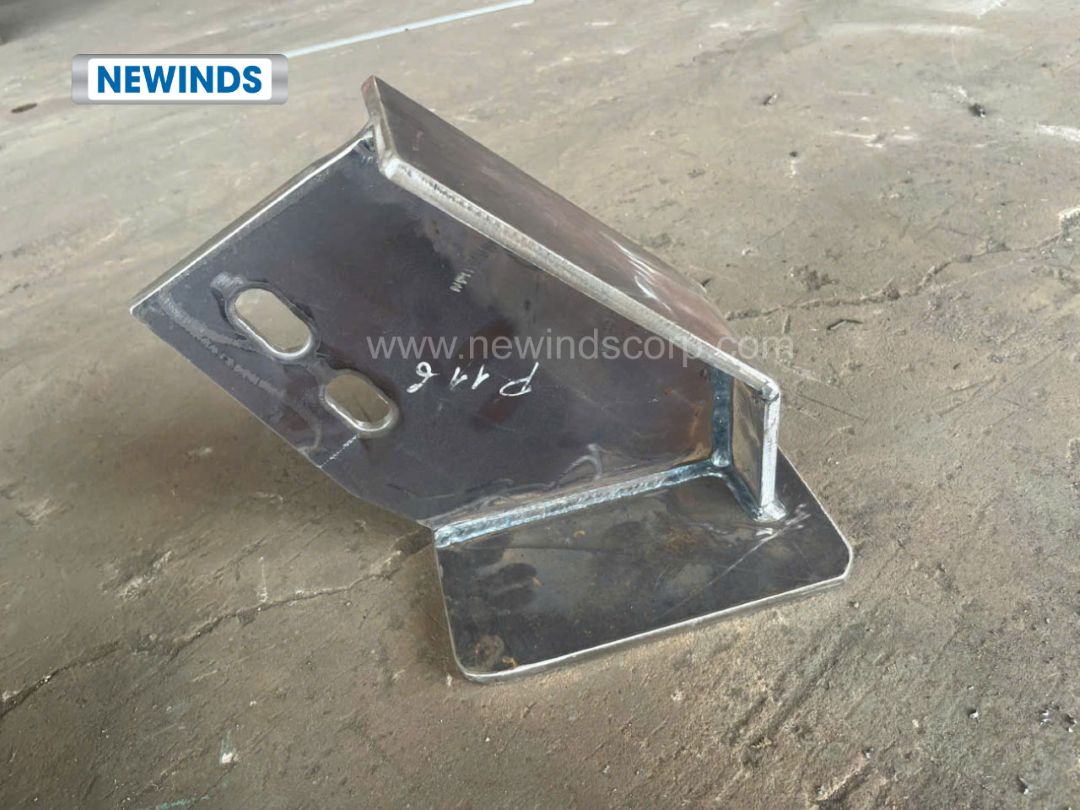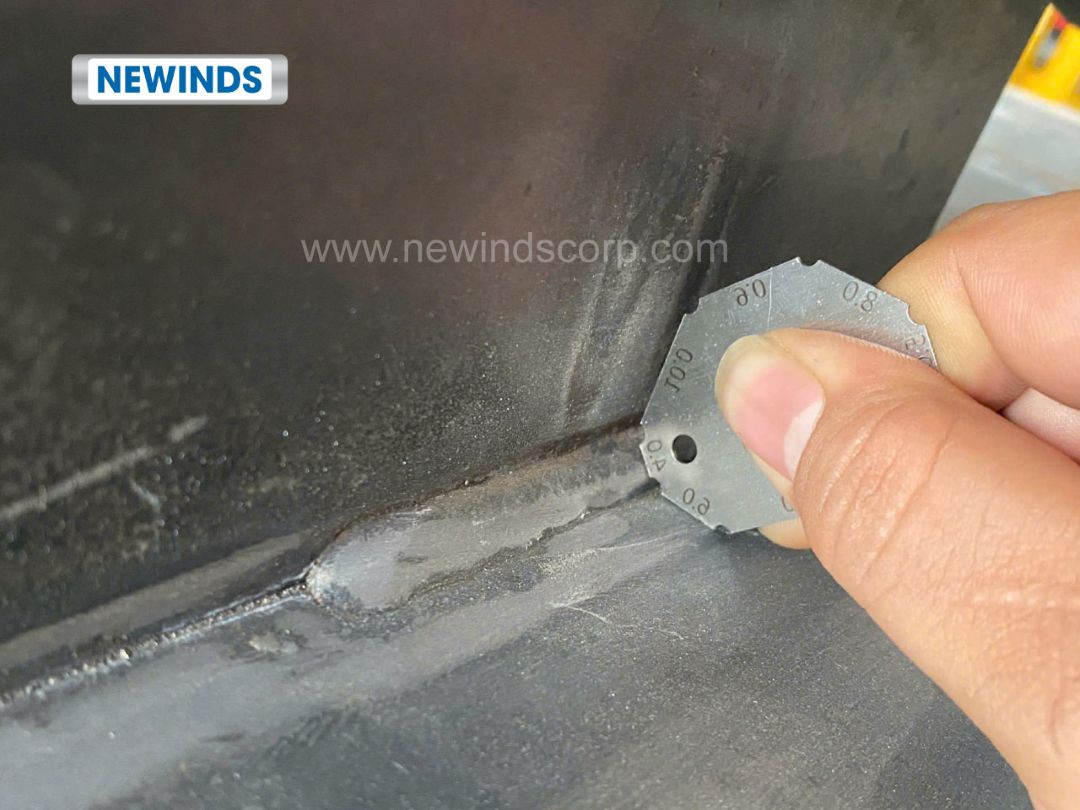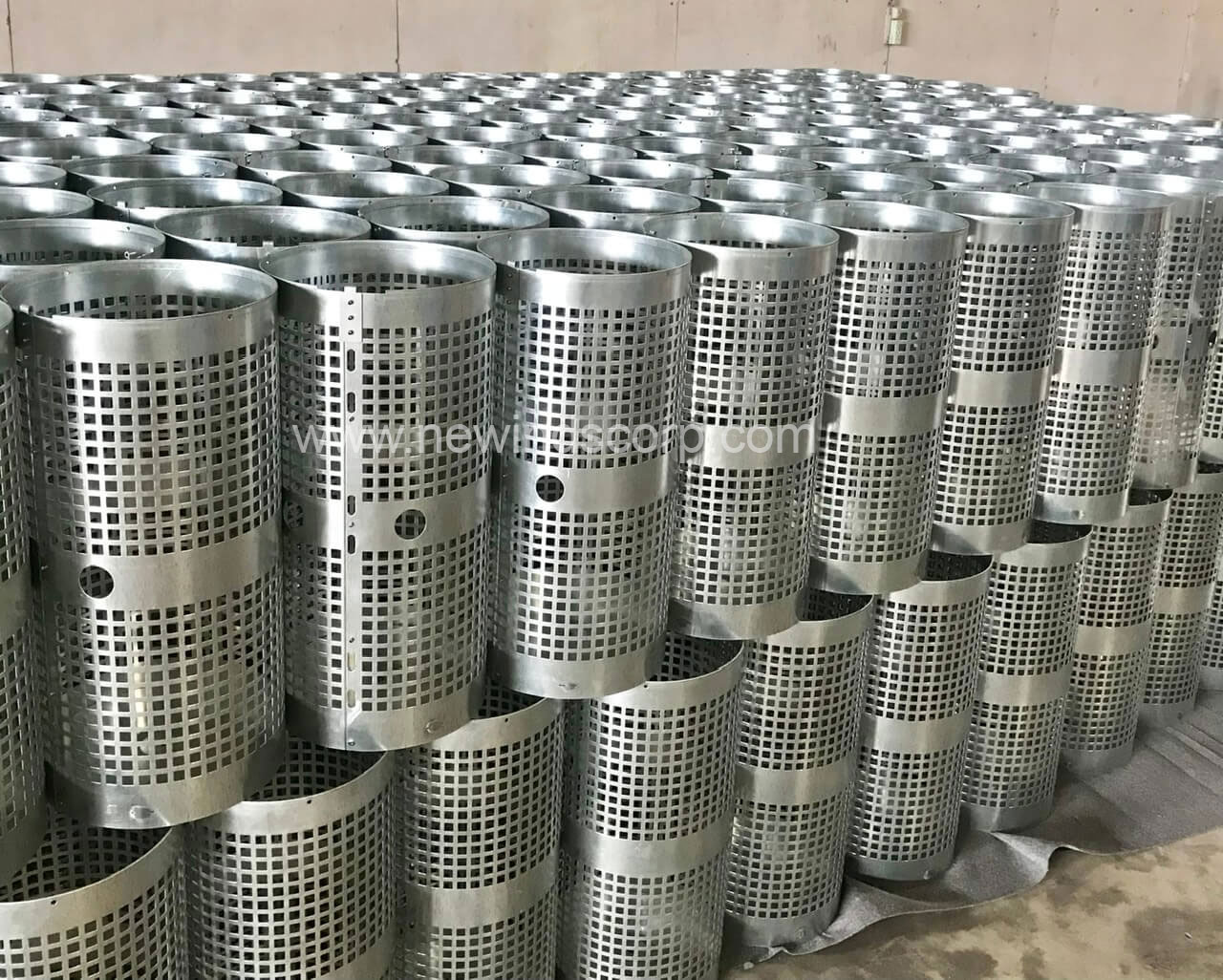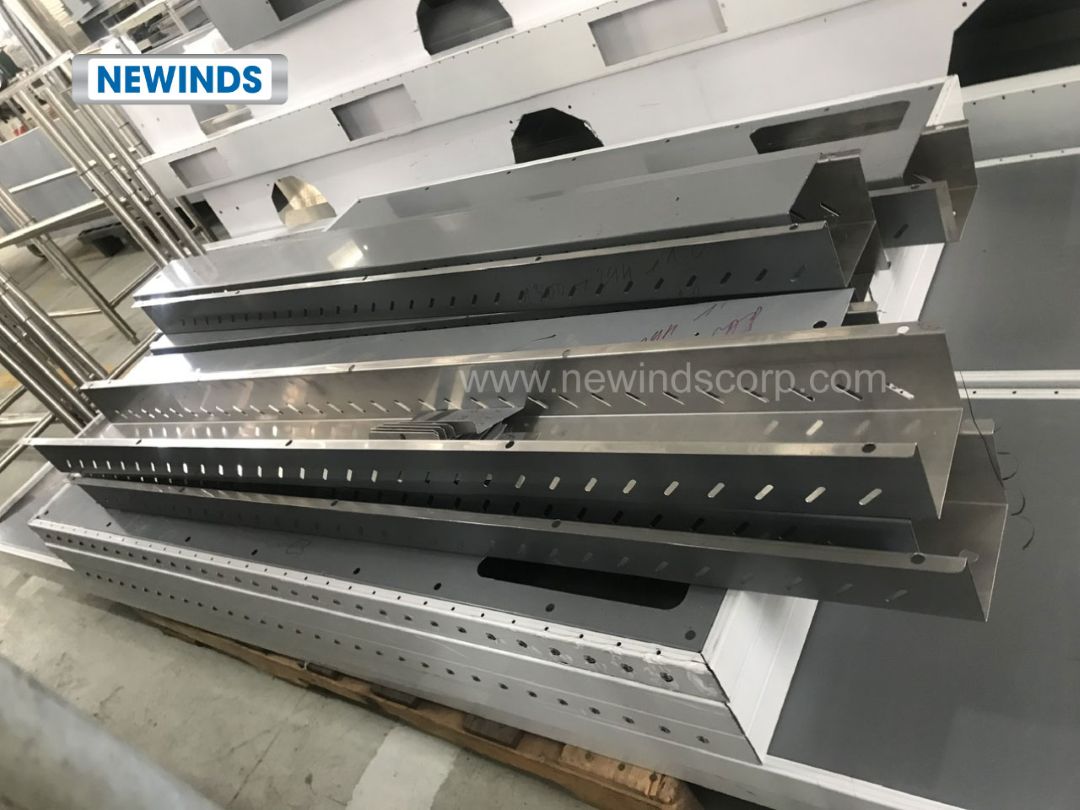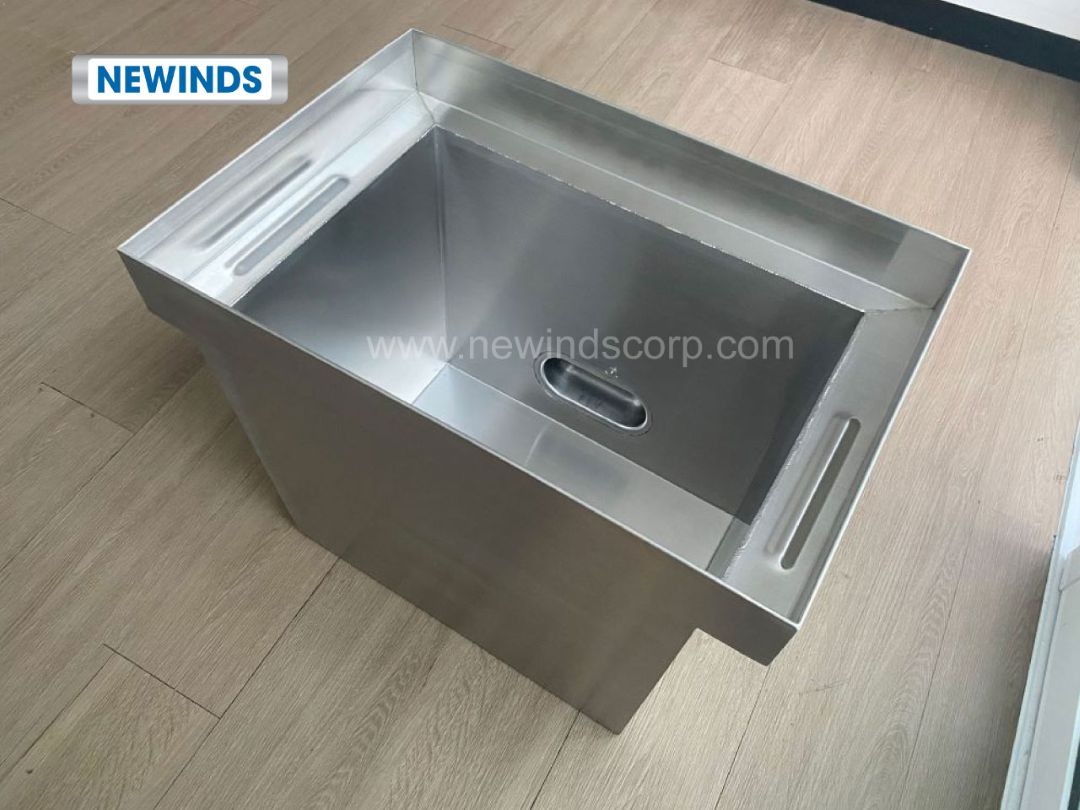The everyday items you use, your laptop, refrigerator, or car, are all born from sheet metal fabrication. This is the powerful process that transforms flat metal sheets into millions of products that serve you every single day. So how exactly are they made, and what are the real advantages and disadvantages? Everything will be revealed in the article below!
WHAT IS SHEET METAL FABRICATION?
Sheet metal fabrication is the process of shaping flat metal sheets through cutting, bending, punching, stamping, welding, and finishing using modern machines such as laser cutters, CNC press brakes, and CNC punching machines to create various desired shapes. To ensure the final sheet metal products meet quality standards, raw metal sheets typically range in thickness from 0.5 mm to 6 mm.
This process produces countless useful items we use every day, such as kitchen appliances, vehicle bodies, electrical enclosures, machine guards, roofing panels, and even the laptop frame you’re using right now.
HOW DOES THE SHEET METAL FABRICATION PROCESS WORK?
The following sheet metal fabrication process explains why this method delivers high durability, large dimensions, and fast production times:
-
Design & Engineering
The process begins with CAD (Computer-Aided Design) files that guide every machine operation. These designs ensure precision in every cut, bend, and weld.
-
Cutting
This is the most fundamental step in sheet metal fabrication. Cutting accuracy depends heavily on the technology used. The most common methods include:
- Laser Cutting (±0.05 – ±0.15 mm): Currently the most popular technology thanks to extremely high precision, fast speed, and sharp edges.
- Plasma Cutting (±0.2 – ±0.5 mm): Suitable for thicker materials and more cost-effective.
- Waterjet Cutting (±0.08 – ±0.2 mm): A no-heat method, ideal for materials sensitive to temperature.
-
Sheet Metal Forming
Forming requires combining multiple steps or repeating specific operations to create a sheet metal part.
Bending: Applying force to change the angle or shape of the sheet without affecting its thickness. The goal is to create V-shapes, U-shapes, curves, or complex profiles. V-bending is the most common technique.
Stamping: Transforming sheet metal using strong compressive force from a press and die. The metal deforms to match the die shape.
Punching: Creating holes by forcing a punch through the sheet into a die, removing the material in the contact area.
-
Welding & Assembly
Welding joins two or more metal parts by heating the contact area to form a strong bond. In sheet metal fabrication, welding turns separate components into complete assemblies using methods such as MIG, TIG, Spot Welding, or Laser Welding.
-
Finishing
The final surface treatment after rough fabrication. This includes cleaning, grinding, powder coating, galvanizing, or anodizing depending on the end-use requirements.
-
Quality Check & Packing
Every sheet metal part is inspected using callipers, measuring instruments, and compared against the original drawing. Once approved, products are carefully packed with plastic wrap, foam, or wooden crates to prevent scratches and damage during transportation.
COMMON TYPES OF SHEET METAL
Choosing the right material is critical in sheet metal fabrication and depends on strength requirements, operating environment, and budget. The most popular types include:
- Stainless Steel
- Galvanised Steel
- Cold Rolled Steel
- Pre-Plated / Pre-Painted Steel
- Copper and Brass Sheets
QUALITY STANDARDS IN SHEET METAL PARTS
Nobody wants sheet metal parts that rust in six months or don’t fit together properly. That’s why reputable sheet metal fabricators strictly follow international standards. The most common ones include:
- ASTM (American Society for Testing and Materials) – widely used globally
Example: ASTM A240 (stainless steel), ASTM A653 (galvanised steel)
- JIS (Japanese Industrial Standards) – extremely popular in Asia
Example: JIS G3101 SS400 (mild steel), JIS G3302 SGCC (galvanised)
- EN (European Norms) – standard across Europe and accepted worldwide
Example: EN 10346 (galvanised), EN 10088-2 (stainless steel)
- AS/NZS (Australia/New Zealand) – common in Oceania
Top-tier sheet metal fabricators not only deliver high-quality steel components but also excel in machinery, material traceability, fast quoting, prototyping, production capacity, and on-time delivery.
APPLICATIONS OF SHEET METAL FABRICATION
-
Automotive & Transportation
Most car bodies, truck cabins, dump truck beds, bus frames, and even electric vehicle battery casings are made using sheet metal fabrication. Thanks to laser cutting and CNC bending, automotive factories produce thousands of precise, lightweight, and strong panels every day.
-
Consumer Goods
Sheet metal fabricators produce everyday household items such as laptop casings, screen hinges, table legs, office chair frames, baking trays, pot lids, barbecue bodies, washing machine shells, bicycle frames, trash bins, and more.
-
Construction & Architecture
Roofing sheets, factory wall cladding, aluminum composite facades, stair railings, industrial roller doors, and modern architectural decorative elements are all products of sheet metal fabrication. The most common materials are galvanised steel, 304 stainless steel, and aluminum for their beauty and weather resistance.
-
Electronics & Electrical
Every electrical enclosure, server rack, factory control panel, inverter enclosure, and 19-inch data center rack is fabricated from sheet metal. Stainless steel and powder-coated mild steel are preferred for EMI shielding and heat dissipation.
-
Food & Pharmaceutical
Worktables, storage cabinets, conveyor frames, industrial sinks, and clean-room furniture are almost 100% made from 304/316 stainless steel using sheet metal fabrication. Hairline or mirror finishes make cleaning easy and meet strict food-safety standards.
-
HVAC & Refrigeration
Square ducting, air handling units, industrial chiller casings, cold-room panels, and entire factory ventilation systems are cut and formed from galvanised or stainless steel sheets — one of the largest consumers of sheet metal in construction.
-
Energy & Power
Electrical cabinets and cable trays in thermal, hydro, wind, and solar power plants are classic sheet metal parts. Hot-dip galvanised steel and thick powder coating ensure over 20 years of outdoor service life.
-
Heavy Machinery & Mining
Feed hoppers, excavator buckets, wear-resistant crusher liners, rolling mill housings, and protective structures are fabricated from thick Hardox, NM400, or AR500 steel using plasma cutting and heavy-duty bending.
ADVANTAGES & DISADVANTAGES OF SHEET METAL FABRICATION
Advantages
- Extremely fast production (laser cutting + CNC bending takes only seconds per part)
- High precision (±0.1 mm) and perfect repeatability
- Lightweight yet very strong thanks to ribs and folded edges
- Wide variety of materials and surface finishes (powder coating, plating, brushing, anodizing…)
- Easy scaling from 1 prototype to tens of thousands of units without expensive tooling
- Cost-effective for medium to high volumes, easy to repair, and 100% recyclable
Disadvantages
- Not suitable for very thick parts (>30–40 mm) or highly complex 3D shapes
- Cut edges can be sharp — requires deburring or hemming for user-contact parts
- Thin sheets can distort during welding if the welder lacks skill
- Material waste occurs if drawings and nesting are not optimized
- High initial cost for very low quantities (1–5 pcs) due to programming and machine setup time
To maximize the benefits of sheet metal fabrication, choose the right material and partner with a reputable sheet metal fabricator so your products are beautiful, durable, and cost-optimized. Ready to start your project? Contact us today for free design advice and a quote within 24 hours!
Need a custom sheet metal fabrication solution? We’re ready to help.
Contact Newinds:
Email: sales@newindscorp.com
Phone/Whatsapp/Zalo: Ann Yen +84 868 482 038
